- Home
- Mark Twain
The Best Short Works of Mark Twain
The Best Short Works of Mark Twain Read online
Thank you for downloading this Simon & Schuster eBook.
* * *
Join our mailing list and get updates on new releases, deals, bonus content and other great books from Simon & Schuster.
CLICK HERE TO SIGN UP
or visit us online to sign up at
eBookNews.SimonandSchuster.com
CONTENTS
INTRODUCTION
CHRONOLOGY OF MARK TWAIN’S LIFE AND WORK
HISTORICAL CONTEXT OF Mark Twain’s Short Stories
THE NOTORIOUS JUMPING FROG OF CALAVERAS COUNTY (1865)
THE STORY OF THE BAD LITTLE BOY (1865)
CANNIBALISM IN THE CARS (1868)
A DAY AT NIAGARA (1869)
LEGEND OF THE CAPITOLINE VENUS (1869)
JOURNALISM IN TENNESSEE (1869)
A CURIOUS DREAM (1870)
THE FACTS IN THE CASE OF THE GREAT BEEF CONTRACT (1870)
HOW I EDITED AN AGRICULTURAL PAPER (1870)
A MEDIEVAL ROMANCE (1870)
MY WATCH (1870)
POLITICAL ECONOMY (1870)
SCIENCE vs. LUCK (1870)
THE STORY OF THE GOOD LITTLE BOY (1870)
BUCK FANSHAW’S FUNERAL (1872)
THE STORY OF THE OLD RAM (1872)
A TRUE STORY (1874)
EXPERIENCE OF THE MCWILLIAMSES WITH MEMBRANOUS CROUP (1875)
THE CANVASSER’S TALE (1876)
THE FACTS CONCERNING THE RECENT CARNIVAL OF CRIME IN CONNECTICUT (1876)
THE LOVES OF ALONZO FITZ CLARENCE AND ROSANNAH ETHELTON (1878)
EDWARD MILLS AND GEORGE BENTON: A TALE (1880)
THE MAN WHO PUT UP AT GADSBY’S (1880)
MRS. MCWILLIAMS AND THE LIGHTNING (1880)
JIM BAKER’S BLUEJAY YARN (1880)
A CURIOUS EXPERIENCE (1881)
THE INVALID’S STORY (1882)
THE MCWILLIAMSES AND THE BURGLAR ALARM (1882)
THE STOLEN WHITE ELEPHANT (1882)
A DYING MAN’S CONFESSION (1883)
THE PROFESSOR’S YARN (1883)
THE PRIVATE HISTORY OF A CAMPAIGN THAT FAILED (1885)
A GHOST STORY (1888)
LUCK (1891)
PLAYING COURIER (1891)
THE CALIFORNIAN’S TALE (1893)
EXTRACTS FROM ADAM’S DIARY (1893)
EVE’S DIARY (1893, 1905)
THE ESQUIMAU MAIDEN’S ROMANCE (1893)
IS HE LIVING OR IS HE DEAD? (1893)
THE £1,000,000 BANK-NOTE (1893)
HOW TO TELL A STORY (1894)
CECIL RHODES AND THE SHARK (1897)
WHY ED JACKSON CALLED ON COMMODORE VANDERBILT (1897)
THE MAN THAT CORRUPTED HADLEYBURG (1899)
THE DEATH DISK (1901)
TWO LITTLE TALES (1901)
THE BELATED RUSSIAN PASSPORT (1902)
A DOUBLE-BARRELED DETECTIVE STORY (1902)
THE FIVE BOONS OF LIFE (1902)
WAS IT HEAVEN? OR HELL? (1902)
A DOG’S TALE (1903)
THE $30,000 BEQUEST (1904)
A HORSE’S TALE (1906)
HUNTING THE DECEITFUL TURKEY (1906)
EXTRACT FROM CAPTAIN STORMFIELD’S VISIT TO HEAVEN (1907)
A FABLE (1909)
INTERPRETIVE NOTES
CRITICAL EXCERPTS
QUESTIONS FOR DISCUSSION
SUGGESTIONS FOR THE INTERESTED READER
NOTES
INTRODUCTION
The Best Short Works of Mark Twain:
THE ASSAULT OF LAUGHTER
Few writers in history have been as widely read or as widely written about as Mark Twain. He was a prolific talent, a complex figure whose genius as a satirist and storyteller of the Old West established his reputation as an American original. The Best Short Works of Mark Twain offers readers a unique opportunity to experience not only the breadth and depth of Twain’s humor and insight but also the evolution of his exceptional literary craft.
The fifty-seven stories collected in this edition span over forty years of the author’s life, from his early days as a frontier journalist with the story that made him famous, “The Notorious Jumping Frog of Calaveras County,” to the groundbreaking slave narrative, “A True Story,” that foreshadowed his masterpiece, Adventures of Huckleberry Finn, to later works such as “The Man That Corrupted Hadleyburg” that illustrate Twain’s brilliant precision in the short story form.
In “How to Tell a Story” Twain writes, “There are several kinds of stories, but only one difficult kind—the humorous.” When reading The Best Short Works of Mark Twain, one finds it hard to imagine the author had difficulty telling any story. Twain’s language is so fluid, his ear for dialect so acute, that his narratives appear effortless and not, as they were in actuality, the product of studied word choice and careful revision. The genres of Twain’s short stories are varied and numerous—tall tales, burlesques, fables, yarns, ghost stories—though his humor remains constant.
Twain used humor as a weapon against racism, greed, and hypocrisy, viewing his wit as a means of encouraging reformation. “Against the assault of laughter,” he wrote in “The Mysterious Stranger,” “nothing can stand.”
The Life and Work of Mark Twain
Mark Twain was born Samuel Langhorne Clemens on November 30, 1835, in Florida, Missouri. When he was born, Halley’s comet, which passes close to Earth every seventy-six years, was visible in the night sky—an astronomical event that ancients considered an indicator that something of great historical significance was about to happen. Twain was well aware that he was born under this auspicious sign, and he sometimes made humorous reference to it. When Mark Twain died on April 21, 1910, Halley’s comet was again blazing across the sky. It seems fitting that the life of so unusual a man should contain such conspicuous celestial bookends. His life spanned a particularly dramatic portion of U.S. history, and he managed to be right in the thick of the action for most it.
Samuel Clemens started out in modest surroundings in a respectable family of six children in Missouri. The Clemens family had been settled in Hannibal, Missouri, for several years when young Samuel’s father died, leaving the family in a difficult financial position. Samuel quit school at age twelve and took several odd jobs before becoming apprenticed to a local printer. In this capacity, he gained exposure to a wide range of writing, and he discovered he had the talent and the ambition to become a writer himself. He soon launched a career as a sort of traveling reporter, writing humorous sketches and articles for newspapers in cities such as St. Louis, New York, Philadelphia, and Cincinnati. In 1857, he headed to New Orleans with plans to travel by ship to South America. Instead, he apprenticed himself to a riverboat captain and spent the next two years traveling up and down the Mississippi River.
Hostilities between the North and South brought commercial traffic on the Mississippi to a halt in 1861, and Clemens had to give up his fledgling career. He served as a soldier in a group of Confederate volunteers in 1861, but quit after a couple of weeks and decided to head out to the Nevada Territory, where the legendary Comstock Lode had been struck in 1859. The Comstock Lode was a huge silver and gold deposit that produced hundreds of millions of dollars’ worth of the precious metals. His luck as a prospector was not so good, and Samuel turned once again to newspaper work, writing for the Territorial Enterprise in Virginia City. In 1863, he began signing his articles “Mark Twain”—an expression used by riverboat crewmen to refer to a safe navigating depth of two fathoms.
In 1864, Twain (as he was now known professionally) started working for a San Francisco paper and traveled for the paper to what are today called the Hawaiian Islands. He wrote about his travels and lectured about Hawaii upon his return to San Fra
ncisco. In many ways, Twain introduced Hawaii to the U.S. mainland, stimulating the tourism to the island that began in the 1860s. Twain continued to travel extensively in Europe and the Holy Land for a couple more years. In 1870, he married Olivia Langdon. They settled in Hartford, Connecticut.
Olivia gave birth to four children: a son named Langdon, born in 1870, who died at the age of two; Susy, born in March 1872; Clara, born in 1874; and Jean, born in 1880. Twain’s literary career blossomed during this period, and his fortunes soared. He published Roughing It in 1872 and The Adventures of Tom Sawyer in 1876.
He published The Prince and the Pauper, a popular success, in 1881. But Twain reached his literary zenith in 1885 with the publication of Adventures of Huckleberry Finn. Though controversial, the book was widely recognized as an important achievement in American literature. Twain followed it up with the publication of several more books, including A Connecticut Yankee in King Arthur’s Court (1889) and Pudd’nhead Wilson (1894).
The 1890s proved tragic for Twain. He had made a number of questionable investments, and the nationwide financial panic of 1893 left him bankrupt. He was forced to book a worldwide lecture series to rebuild his fortune. The tour cemented his professional reputation and he earned the admiration of many of the leading artists and writers of Europe. Though his fame grew, his family suffered. In 1896, his daughter Susy died of meningitis. After a long illness, his wife died in 1904. In 1909, his daughter Jean died. Twain was left bitter and lonely; his later work, such as What Is Man? (1906), was especially dark and cynical, reflecting his emotional state. He died in Connecticut in 1910. And although only his daughter Clara outlived him, thousands of mourners filed past his casket to pay their respects at his funeral.
Historical and Literary Context of The Best Short Works of Mark Twain
Prelude to the Civil War
Twain’s experiences in the first three decades of his life provided him with the material he would write about throughout his career. As a child in Hannibal, Missouri, Twain witnessed the atrocities of slavery firsthand. In the years leading up to the Civil War, when the nation was disputing the morality and legality of owning slaves, Twain’s opinion on the issue had been long decided.
The issue of slavery had threatened to divide the United States from the very beginning. In Northern states, where industrialization made cheap labor less of an economic necessity, the abolitionist movement rapidly gained momentum in the early 1800s. The economies of the Southern states, however, were based on farming, and landowners required cheap labor. Also, after two hundred years of living with large slave populations, Southerners had come to see slavery as a part of their cultural heritage. Wealthy Southerners in particular were determined to preserve their way of life, and they fought hard to maintain the legality of slavery. Southerners were well aware that the balance of power would shift if opponents of slavery began to outnumber slavery supporters in Congress and that then slavery would probably be outlawed. Each annexation of territory by the U.S. government brought new battles over whether slavery should be permitted.
The Missouri Compromise of 1820 was the resolution of a particularly long congressional battle over slavery. The territory of Missouri, home to thousands of slaves, had petitioned for statehood in 1818, but Northern congressmen objected to admitting another slave state to the Union. In 1820, Henry Clay, a representative from Kentucky, came up with a compromise. Maine had just applied for statehood. Clay suggested accepting Maine as a free state and Missouri as a slave state—thus maintaining the balance of power. But under the terms of the compromise, slavery would not be permitted anywhere north or west of Missouri within the Louisiana Purchase. Missouri was admitted to the Union in 1821.
The U.S. continued to expand, however, and the Missouri Compromise did not quiet sectional disputes for very long. The U.S. annexed Texas in 1845, which led to war with Mexico. The U.S. quickly won the war and took over most of what is now the western part of the country. Once again, battles over power in Congress threatened to tear the nation apart. Clay helped craft the Compromise of 1850 in an attempt to stave off civil war. He struck a difficult, troubling bargain. In exchange for ensuring that the western U.S. would be free from slavery, Congress passed the Fugitive Slave Act, which stated that slaves who escaped to free states or free territory must be returned to their owners.
The Compromise of 1850 pleased very few people, but the peace was preserved for a few more years. Then the Kansas-Nebraska Act of 1854 repealed the Missouri Compromise by granting all states the right to make or keep slavery legal. Abolitionists were outraged. Bloody battles over the issue broke out in Kansas Territory. In 1861, most of the Southern states seceded from the Union and civil war finally erupted.
Post–Civil War Literary Landscape
American book publishing was transformed in the period just before the Civil War. Whereas the works of the nation’s earlier authors were read by a small population of intellectuals, authors in the 1850s and beyond began to reach a wider population through a practice called “subscription publishing.” Sales representatives would go door-to-door in towns across the country, armed with enticing book brochures, and sell books in advance of printing. This is how Twain found his audience. His humor was very popular with the general reading public, and although he was also admired by intellectuals, average readers buying his books by the thousands are what made him rich.
In terms of literary movements, Twain’s work can be seen as part of American literary realism. Literary realism, a reaction against the more fantastical and sentimental fiction of the American romantic period, featured accurate representations of the lives of Americans in various contexts. Realists valued detail and plausibility in their fiction. Characters were complex, flawed people with believable motives. The language used in books by realists was straightforward and sometimes comic or satiric, but not flowery or overtly poetic (although much realistic writing is very beautiful). Other American writers whose works can be seen as realist were Henry James, author of such books as Daisy Miller (1879) and The Golden Bowl (1904), and Edith Wharton, author of The House of Mirth (1905), Ethan Frome (1911), and many other books. Twain distinguished himself from other writers of this period by his use of humor and his masterful skill in portraying common American speech.
CHRONOLOGY OF MARK TWAIN’S LIFE AND WORK
1835: Samuel Langhorne Clemens born November 30, in Florida, Missouri.
1839: John Clemens, Samuel’s father, moves his family to nearby Hannibal, where Samuel spends his boyhood.
1848: Samuel becomes apprentice printer.
1852: Samuel begins editing his brother’s newspaper and publishing his own humorous sketches.
1853: Leaves Hannibal and begins working as a traveling reporter in such cities as St. Louis, New York, Philadelphia, and Cincinnati.
1857: Becomes apprenticed to a riverboat captain.
1861: Tries prospecting for silver in the Nevada Territory.
1863: Uses the pseudonym “Mark Twain” for the first time on a travel sketch.
1864: Moves to San Francisco and continues working as a journalist.
1866: Travels to Hawaii (then called the Sandwich Islands) as a correspondent for a newspaper in Sacramento. Lectures about his travels upon his return.
1867: Travels to Europe and the Holy Land. Publishes The Celebrated Jumping Frog of Calaveras County, and Other Sketches.
1869: The Innocents Abroad published.
1870: Twain marries Olivia Langdon. Son Langdon Clemens is born prematurely (dies two years later).
1871: Twain and family move to Hartford, Connecticut.
1872: Daughter Susy born. Roughing It published.
1874: Daughter Clara born.
1876: Publication of The Adventures of Tom Sawyer.
1880: Daughter Jean born. Twain loses thousands on a bad investment. Publishes A Tramp Abroad.
1881: Publication of The Prince and the Pauper.
1883: Publication of Life on the Mississippi
.
1885: Publication of Adventures of Huckleberry Finn.
1889: Publication of A Connecticut Yankee in King Arthur’s Court.
1894: Publication of The Tragedy of Pudd’nhead Wilson.
1896: Daughter Susy dies of spinal meningitis.
1904: Twain’s wife, Olivia, dies.
1909: Daughter Jean dies; daughter Clara marries.
1910: Twain dies on April 21 and is buried in Elmira, New York.
HISTORICAL CONTEXT OF MARK TWAIN’S SHORT STORIES
1808: Congress outlaws the importation of African slaves.
1811: The first steamboat sails on the Mississippi.
1820: Missouri Compromise allows for admission of Missouri into Union as a slave state.
1821: Missouri granted statehood.
1838: The Underground Railroad is established.
1842: Charles Dickens tours the United States, speaks out against the institution of slavery.
1845: Texas agrees to be annexed by U.S. and becomes twenty-eighth state.
1846: Mexican-American War begins over Texas annexation. U.S. wins a speedy victory and claims most of the western part of the country (the territory that is now California, Arizona, Nevada, Utah, Colorado, Wyoming, and parts of New Mexico). The question of slavery in new territories is again hotly debated.
1850: The Compromise of 1850 includes the Fugitive Slave Act, which required all citizens to assist in the return of fugitive slaves to their owners and denied fugitives the right to a jury trial.
1854: Kansas-Nebraska Act passed, repealing the Missouri Compromise and allowing states to decide for themselves the question of slavery.
1857: Dred Scott decision by U.S. Supreme Court rules that a slave’s residence in a free state or free territory does not make him free.
1859: Abolitionist John Brown and followers raid the U.S. arsenal at Harpers Ferry in Virginia and try to start a slave insurrection. Brown is caught and hanged for treason.

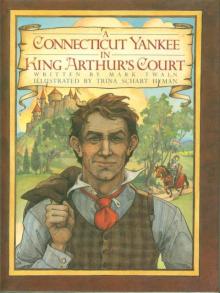 A Connecticut Yankee in King Arthur's Court
A Connecticut Yankee in King Arthur's Court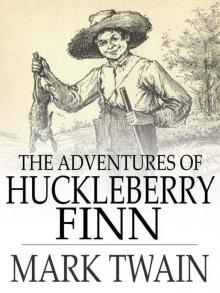 Adventures of Huckleberry Finn
Adventures of Huckleberry Finn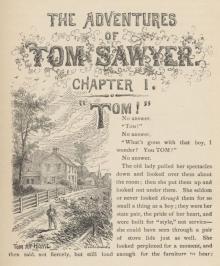 The Adventures of Tom Sawyer, Part 1.
The Adventures of Tom Sawyer, Part 1. The Prince and the Pauper
The Prince and the Pauper The American Claimant
The American Claimant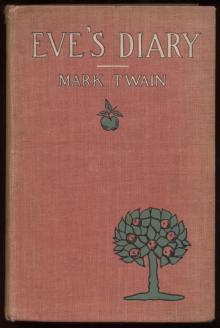 Eve's Diary, Complete
Eve's Diary, Complete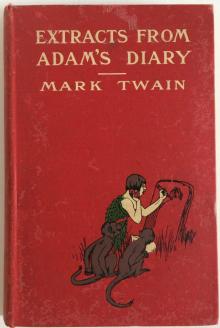 Extracts from Adam's Diary, translated from the original ms.
Extracts from Adam's Diary, translated from the original ms.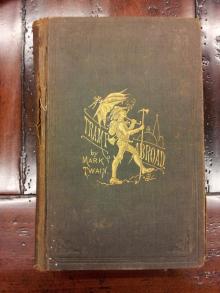 A Tramp Abroad
A Tramp Abroad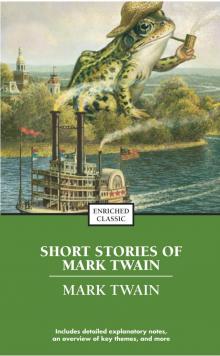 The Best Short Works of Mark Twain
The Best Short Works of Mark Twain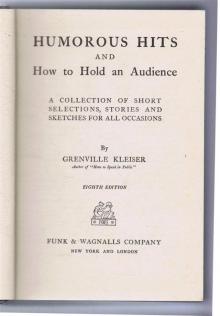 Humorous Hits and How to Hold an Audience
Humorous Hits and How to Hold an Audience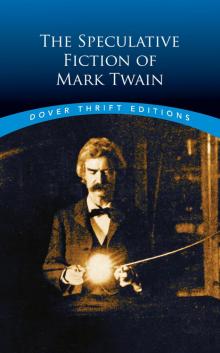 The Speculative Fiction of Mark Twain
The Speculative Fiction of Mark Twain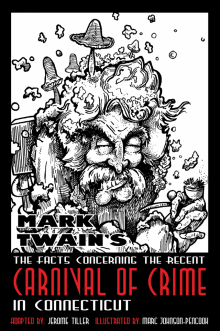 The Facts Concerning the Recent Carnival of Crime in Connecticut
The Facts Concerning the Recent Carnival of Crime in Connecticut Alonzo Fitz, and Other Stories
Alonzo Fitz, and Other Stories The $30,000 Bequest, and Other Stories
The $30,000 Bequest, and Other Stories Pudd'nhead Wilson and Those Extraordinary Twins
Pudd'nhead Wilson and Those Extraordinary Twins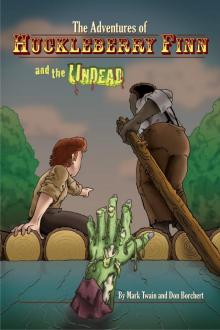 The Adventures of Huckleberry Finn and the Undead
The Adventures of Huckleberry Finn and the Undead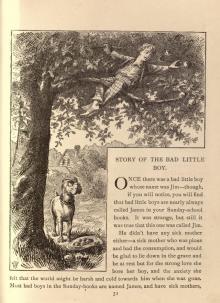 Sketches New and Old
Sketches New and Old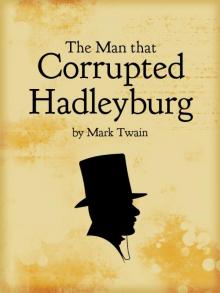 The Man That Corrupted Hadleyburg
The Man That Corrupted Hadleyburg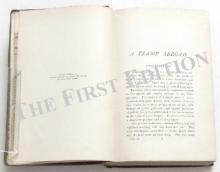 A Tramp Abroad — Volume 06
A Tramp Abroad — Volume 06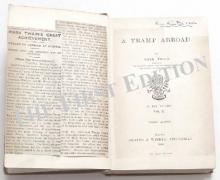 A Tramp Abroad — Volume 02
A Tramp Abroad — Volume 02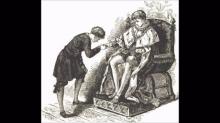 The Prince and the Pauper, Part 1.
The Prince and the Pauper, Part 1. Adventures of Huckleberry Finn, Chapters 16 to 20
Adventures of Huckleberry Finn, Chapters 16 to 20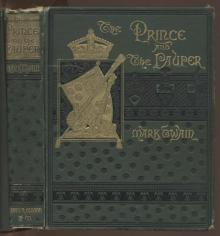 The Prince and the Pauper, Part 9.
The Prince and the Pauper, Part 9.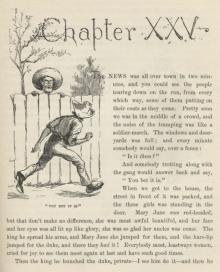 Adventures of Huckleberry Finn, Chapters 21 to 25
Adventures of Huckleberry Finn, Chapters 21 to 25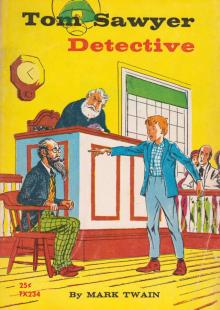 Tom Sawyer, Detective
Tom Sawyer, Detective A Tramp Abroad (Penguin ed.)
A Tramp Abroad (Penguin ed.) Adventures of Huckleberry Finn, Chapters 36 to the Last
Adventures of Huckleberry Finn, Chapters 36 to the Last The Mysterious Stranger, and Other Stories
The Mysterious Stranger, and Other Stories A Tramp Abroad — Volume 03
A Tramp Abroad — Volume 03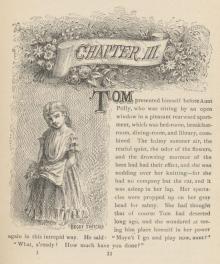 The Adventures of Tom Sawyer, Part 3.
The Adventures of Tom Sawyer, Part 3.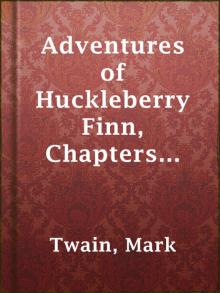 Adventures of Huckleberry Finn, Chapters 06 to 10
Adventures of Huckleberry Finn, Chapters 06 to 10_preview.jpg) The Adventures of Huckleberry Finn (Tom Sawyer's Comrade)
The Adventures of Huckleberry Finn (Tom Sawyer's Comrade)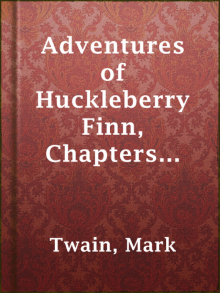 Adventures of Huckleberry Finn, Chapters 31 to 35
Adventures of Huckleberry Finn, Chapters 31 to 35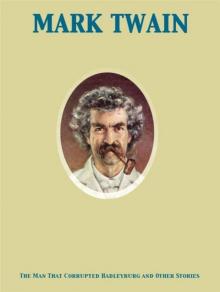 The Man That Corrupted Hadleyburg, and Other Stories
The Man That Corrupted Hadleyburg, and Other Stories A Tramp Abroad — Volume 07
A Tramp Abroad — Volume 07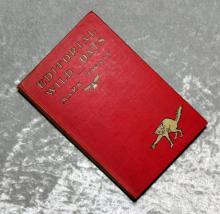 Editorial Wild Oats
Editorial Wild Oats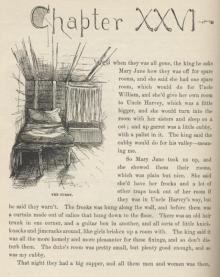 Adventures of Huckleberry Finn, Chapters 26 to 30
Adventures of Huckleberry Finn, Chapters 26 to 30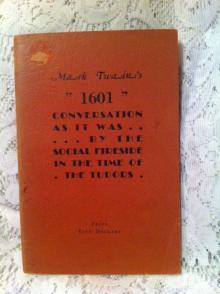 1601: Conversation as it was by the Social Fireside in the Time of the Tudors
1601: Conversation as it was by the Social Fireside in the Time of the Tudors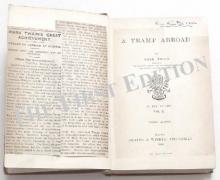 A Tramp Abroad — Volume 05
A Tramp Abroad — Volume 05 Sketches New and Old, Part 1.
Sketches New and Old, Part 1. The Adventures of Tom Sawyer, Part 2.
The Adventures of Tom Sawyer, Part 2.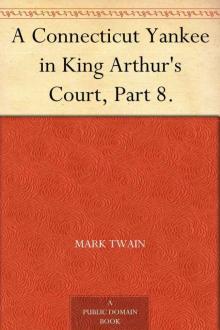 A Connecticut Yankee in King Arthur's Court, Part 8.
A Connecticut Yankee in King Arthur's Court, Part 8. A Tramp Abroad — Volume 01
A Tramp Abroad — Volume 01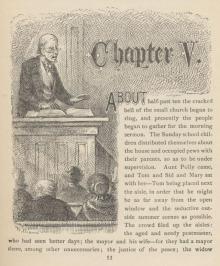 The Adventures of Tom Sawyer, Part 5.
The Adventures of Tom Sawyer, Part 5.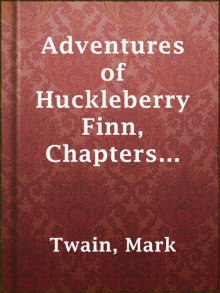 Adventures of Huckleberry Finn, Chapters 01 to 05
Adventures of Huckleberry Finn, Chapters 01 to 05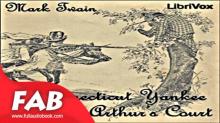 A Connecticut Yankee in King Arthur's Court, Part 1.
A Connecticut Yankee in King Arthur's Court, Part 1. The Adventures of Tom Sawyer, Part 4.
The Adventures of Tom Sawyer, Part 4. A Connecticut Yankee in King Arthur's Court, Part 2.
A Connecticut Yankee in King Arthur's Court, Part 2.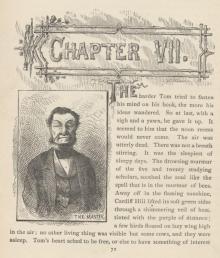 The Adventures of Tom Sawyer, Part 7.
The Adventures of Tom Sawyer, Part 7. A Connecticut Yankee in King Arthur's Court, Part 3.
A Connecticut Yankee in King Arthur's Court, Part 3. Sketches New and Old, Part 4.
Sketches New and Old, Part 4.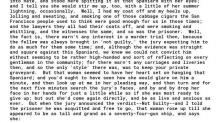 Sketches New and Old, Part 3.
Sketches New and Old, Part 3. A Connecticut Yankee in King Arthur's Court, Part 7.
A Connecticut Yankee in King Arthur's Court, Part 7.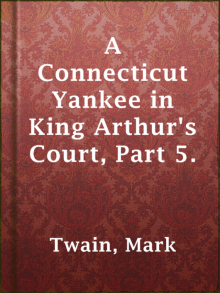 A Connecticut Yankee in King Arthur's Court, Part 5.
A Connecticut Yankee in King Arthur's Court, Part 5. A Connecticut Yankee in King Arthur's Court, Part 6.
A Connecticut Yankee in King Arthur's Court, Part 6. A Connecticut Yankee in King Arthur's Court, Part 4.
A Connecticut Yankee in King Arthur's Court, Part 4. Sketches New and Old, Part 2.
Sketches New and Old, Part 2. Sketches New and Old, Part 6.
Sketches New and Old, Part 6. Adventures of Huckleberry Finn, Chapters 11 to 15
Adventures of Huckleberry Finn, Chapters 11 to 15 Personal Recollections of Joan of Arc
Personal Recollections of Joan of Arc Sketches New and Old, Part 5.
Sketches New and Old, Part 5.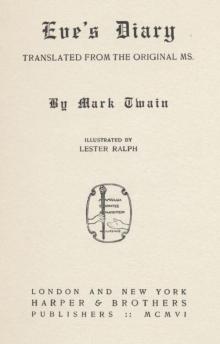 Eve's Diary, Part 3
Eve's Diary, Part 3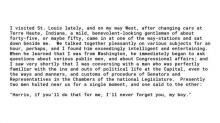 Sketches New and Old, Part 7.
Sketches New and Old, Part 7. Mark Twain on Religion: What Is Man, the War Prayer, Thou Shalt Not Kill, the Fly, Letters From the Earth
Mark Twain on Religion: What Is Man, the War Prayer, Thou Shalt Not Kill, the Fly, Letters From the Earth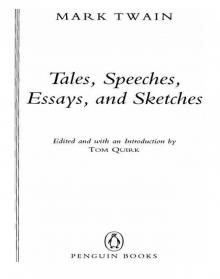 Tales, Speeches, Essays, and Sketches
Tales, Speeches, Essays, and Sketches A Connecticut Yankee in King Arthur's Court, Part 9.
A Connecticut Yankee in King Arthur's Court, Part 9. Our Fellow Savages of the Sandwich Islands (version 1)
Our Fellow Savages of the Sandwich Islands (version 1) 1601
1601 Letters from the Earth
Letters from the Earth Curious Republic Of Gondour, And Other Curious Whimsical Sketches
Curious Republic Of Gondour, And Other Curious Whimsical Sketches The Mysterious Stranger
The Mysterious Stranger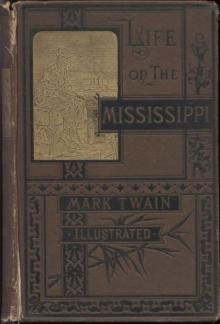 Life on the Mississippi
Life on the Mississippi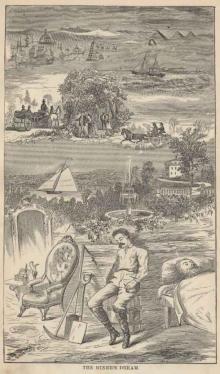 Roughing It
Roughing It Alonzo Fitz and Other Stories
Alonzo Fitz and Other Stories The 30,000 Dollar Bequest and Other Stories
The 30,000 Dollar Bequest and Other Stories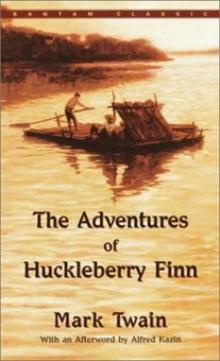 The Adventures of Huckleberry Finn taots-2
The Adventures of Huckleberry Finn taots-2 A Double-Barreled Detective Story
A Double-Barreled Detective Story adam's diary.txt
adam's diary.txt A Horse's Tale
A Horse's Tale Autobiography Of Mark Twain, Volume 1
Autobiography Of Mark Twain, Volume 1 The Comedy of Those Extraordinary Twins
The Comedy of Those Extraordinary Twins Following the Equator
Following the Equator Goldsmith's Friend Abroad Again
Goldsmith's Friend Abroad Again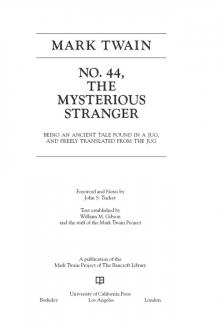 No. 44, The Mysterious Stranger
No. 44, The Mysterious Stranger The Stolen White Elephant
The Stolen White Elephant The $30,000 Bequest and Other Stories
The $30,000 Bequest and Other Stories The Curious Republic of Gondour, and Other Whimsical Sketches
The Curious Republic of Gondour, and Other Whimsical Sketches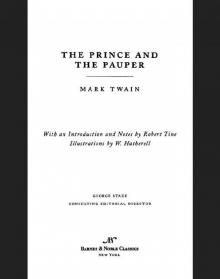 Prince and the Pauper (Barnes & Noble Classics Series)
Prince and the Pauper (Barnes & Noble Classics Series) The Portable Mark Twain
The Portable Mark Twain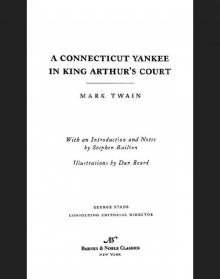 Connecticut Yankee in King Arthur's Court (Barnes & Noble Classics Series)
Connecticut Yankee in King Arthur's Court (Barnes & Noble Classics Series) The Adventures of Tom Sawyer taots-1
The Adventures of Tom Sawyer taots-1 A Double Barrelled Detective Story
A Double Barrelled Detective Story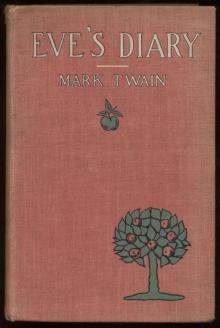 Eve's Diary
Eve's Diary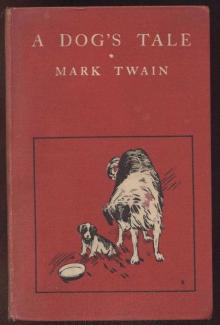 A Dog's Tale
A Dog's Tale The Mysterious Stranger Manuscripts (Literature)
The Mysterious Stranger Manuscripts (Literature) The Complete Short Stories of Mark Twain
The Complete Short Stories of Mark Twain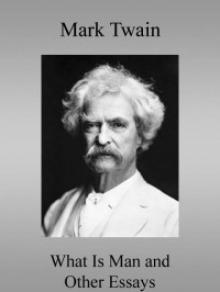 What Is Man? and Other Essays
What Is Man? and Other Essays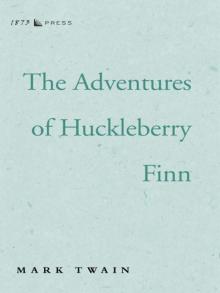 The Adventures of Huckleberry Finn
The Adventures of Huckleberry Finn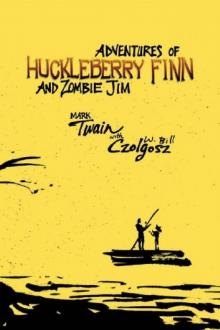 Adventures of Huckleberry Finn and Zombie Jim
Adventures of Huckleberry Finn and Zombie Jim Who Is Mark Twain?
Who Is Mark Twain? Christian Science
Christian Science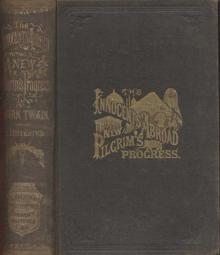 The Innocents Abroad
The Innocents Abroad Some Rambling Notes of an Idle Excursion
Some Rambling Notes of an Idle Excursion Autobiography of Mark Twain
Autobiography of Mark Twain Those Extraordinary Twins
Those Extraordinary Twins Autobiography of Mark Twain: The Complete and Authoritative Edition, Volume 1
Autobiography of Mark Twain: The Complete and Authoritative Edition, Volume 1